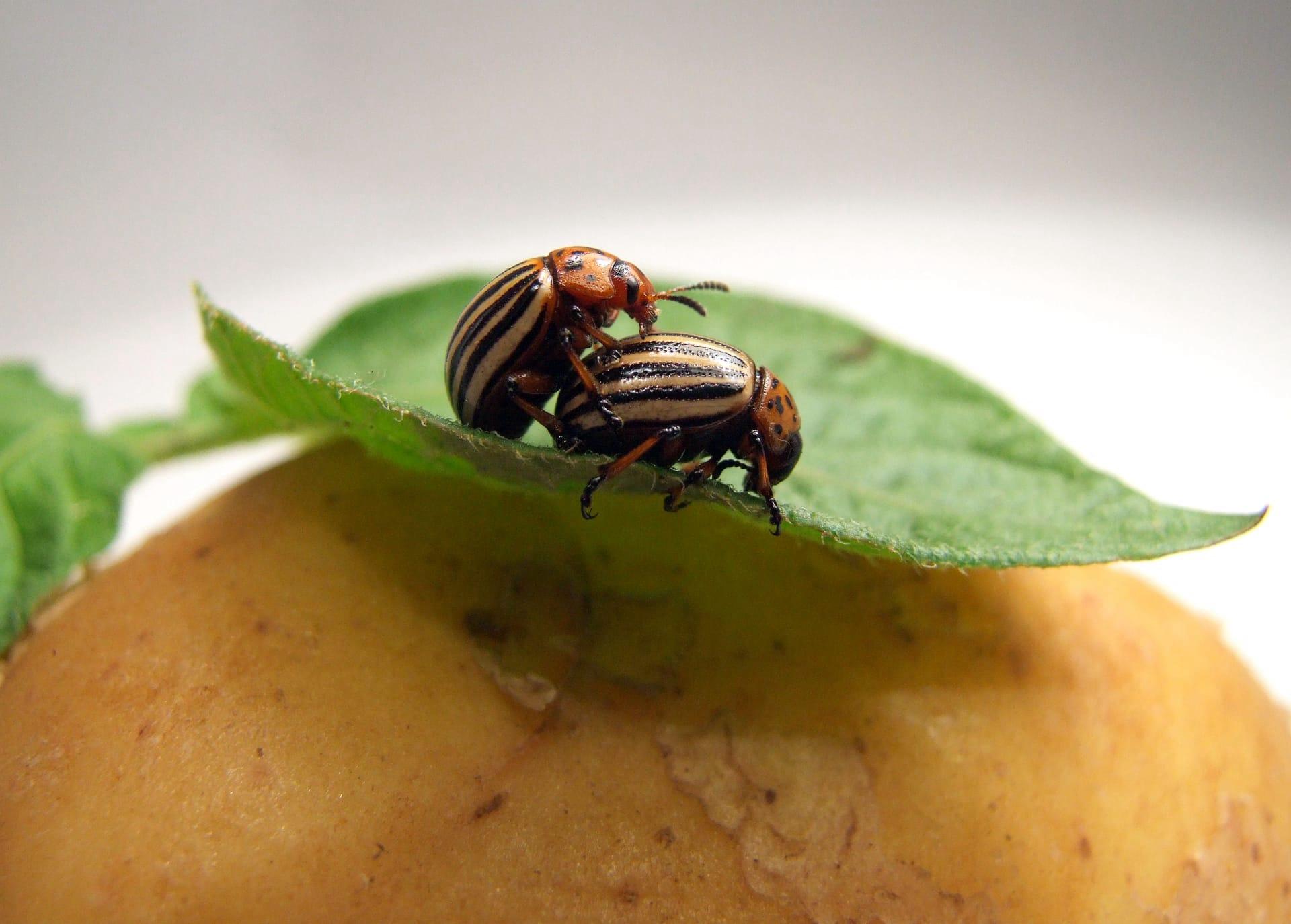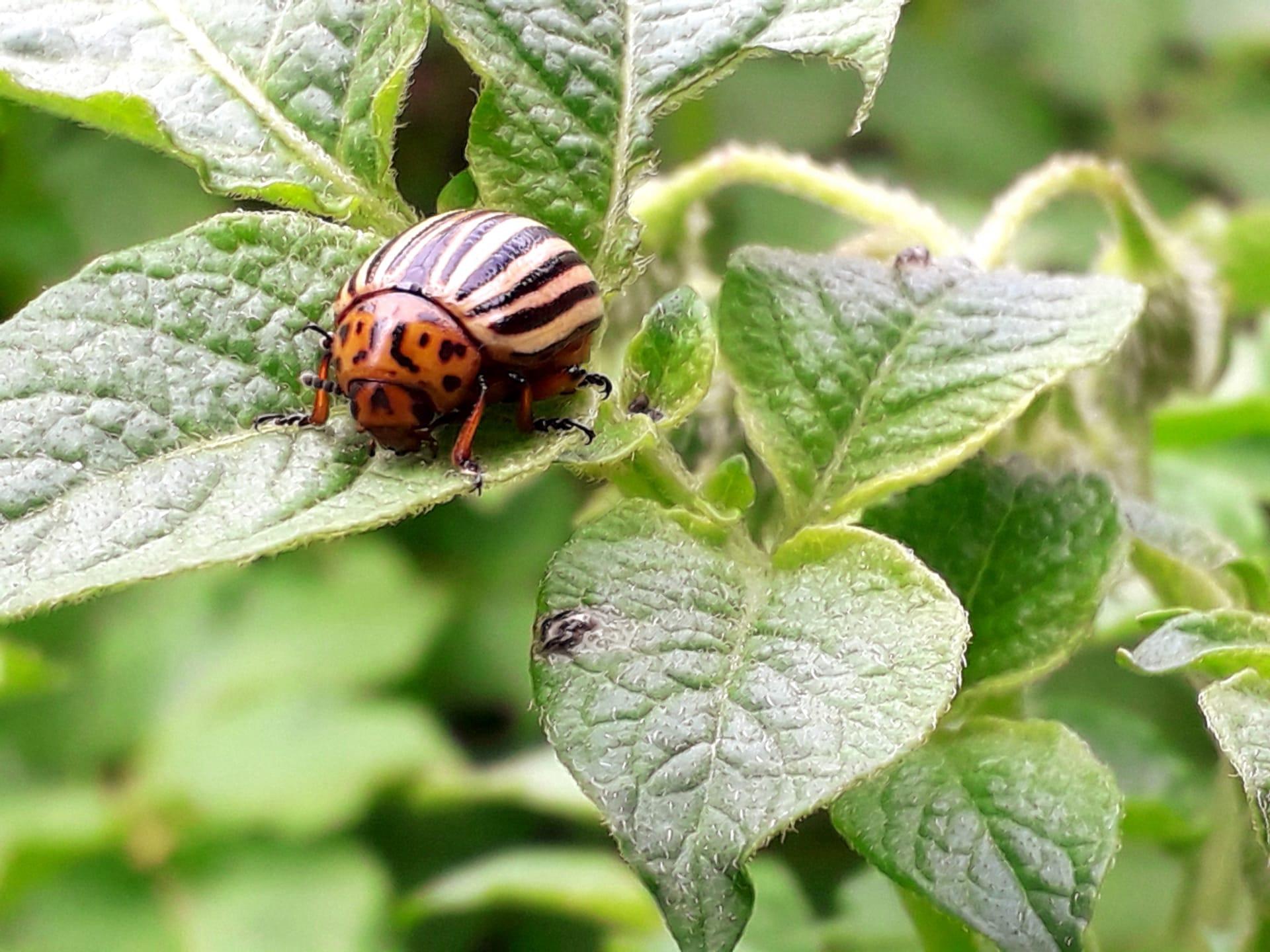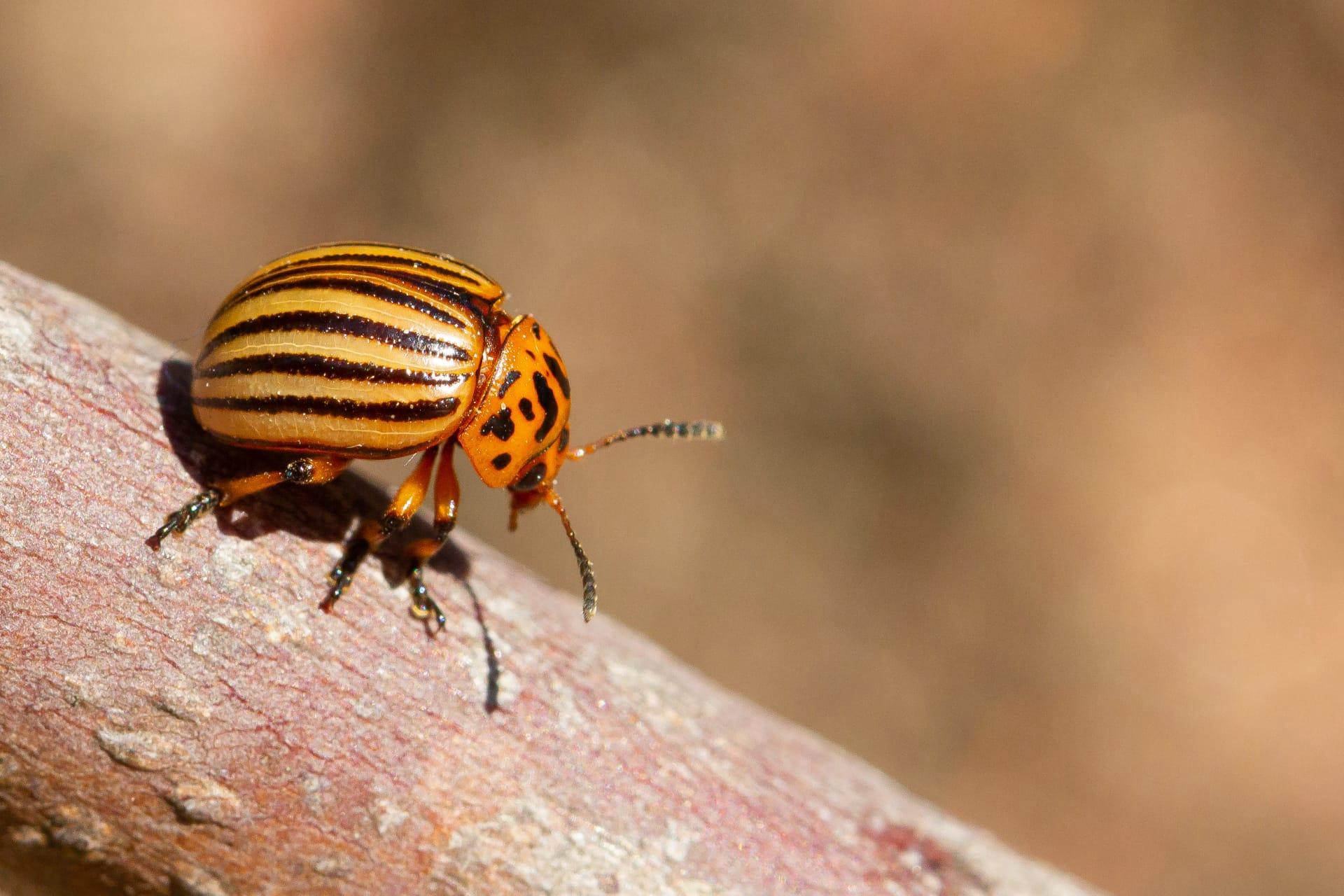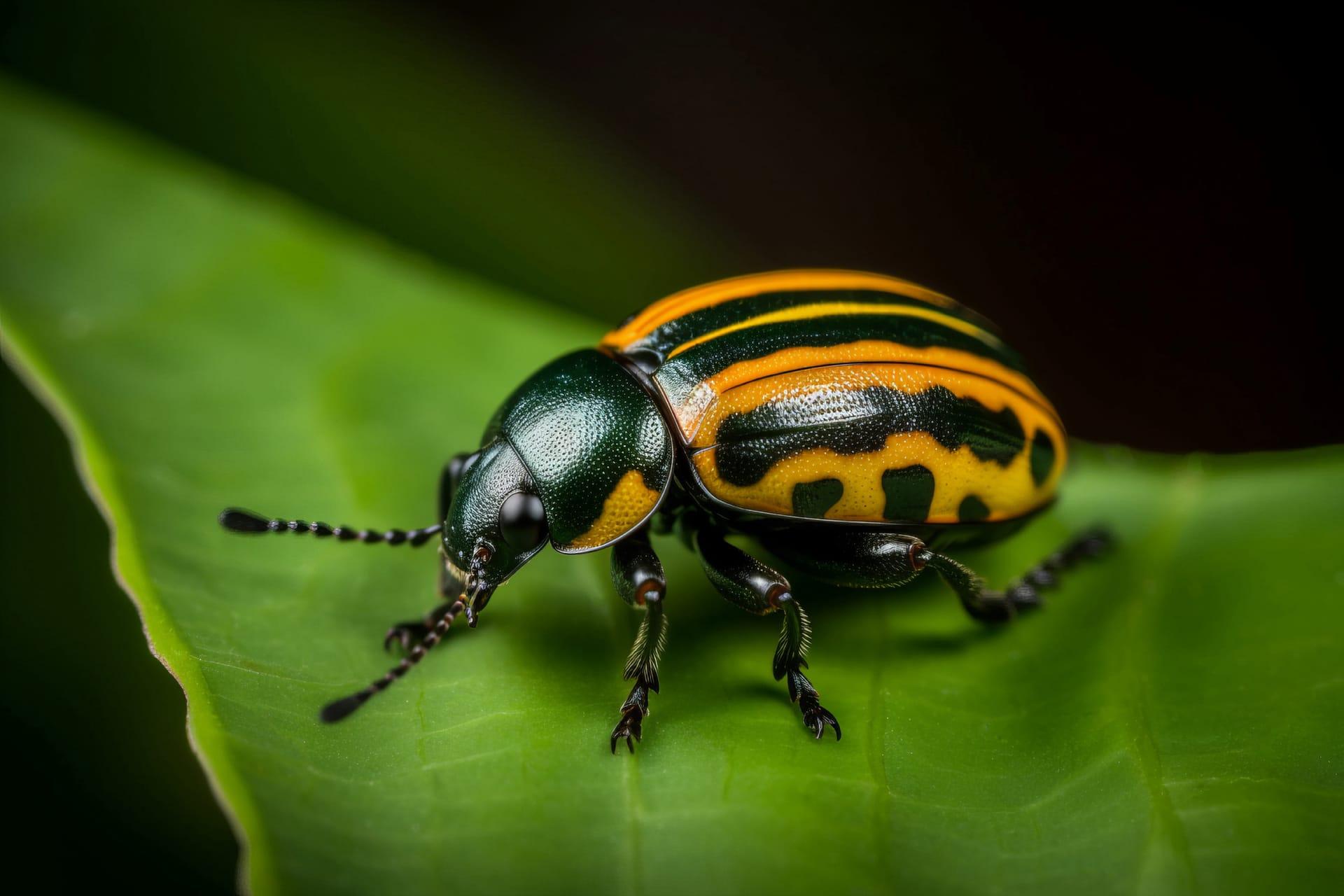Potato Bugs
- Home /
- Mini Encyclopedia /
- Animal /
- Potato Bugs
1
The Potato Bug, also known as the Colorado potato beetle (Leptinotarsa decemlineata), belongs to the family Chrysomelidae in the order Coleoptera. This species is easily recognizable by its yellow-orange body and distinctive black stripes across the elytra (wing covers). Adult beetles are about 3/8 inch long. Their larvae are reddish-brown with black spots on the sides and are known for their voracious appetite for potato leaves.
Potato Bugs are primarily found in regions where their primary food source, potatoes, are cultivated. Originally from the mountain valleys of Mexico, they spread to the United States in the mid-19th century and have since become a major pest in potato farming areas across North America and Europe. Their ability to rapidly develop resistance to pesticides has facilitated their spread across various climates and landscapes, making them a resilient and adaptable species.

2
Question: Are Potato Bugs poisonous to humans or pets?
Answer: A common misconception about Potato Bugs is that they are highly toxic. In reality, while they do contain solanine, a toxic compound also found in green potatoes and other nightshade plants, the concentration in the beetles is relatively low. This means they are unlikely to cause harm to humans or pets unless consumed in extremely large quantities. However, handling them can sometimes cause a mild allergic reaction in some people, characterized by a rash or irritation on the skin.

3
Potato Bugs have developed several effective survival strategies. One of their primary strategies is their rapid reproductive cycle. A female can lay up to 500 eggs in her lifetime, and these eggs hatch within 4-15 days, depending on environmental conditions. This rapid life cycle allows for multiple generations within a single growing season, quickly escalating their population if left unchecked.
Another strategy is their adaptability to pesticides. They have developed resistance to many chemical controls, which forces farmers to rotate different types of pesticides or employ integrated pest management techniques. This resistance is a result of their genetic variability and ability to rapidly evolve, making them a challenging pest to manage in agricultural settings.

4
In the ecosystem, Potato Bugs play a role as both a pest and a food source. As a pest, they have a significant impact on potato crops, causing extensive damage and yield loss if not properly managed. Their feeding can defoliate plants, reducing the plant's ability to photosynthesize and ultimately affecting crop production.
However, they also serve as a food source for various natural predators, including birds, small mammals, and other insects like ladybugs and lacewings. This predatory relationship helps to control their population naturally. The presence of Potato Bugs can indicate the health of an agricultural ecosystem, as their numbers often rise in response to imbalances caused by excessive pesticide use or other environmental stressors.

5
Film: "The Secret World of Potato Bugs" (United States, 2018) is a documentary that delves into the life cycle and ecological impact of the Colorado potato beetle. It explores their role in agriculture, the challenges they pose to farmers, and the ongoing efforts to manage their populations in sustainable ways.
Book: "Insects on Potatoes" (United Kingdom, 2020) by James H. Martin. This book provides a comprehensive overview of various insects affecting potato crops, including the Potato Bug. It covers their biology, behavior, and the latest management strategies used in different parts of the world.
Book: "The Beetle Battles" (Canada, 2019) by Elizabeth Turner. Focused on the Colorado potato beetle, this book examines the beetle's evolutionary journey, its impact on agriculture, and the scientific efforts to understand and control its spread. Turner combines scientific research with engaging narratives to provide a thorough understanding of this resilient insect.